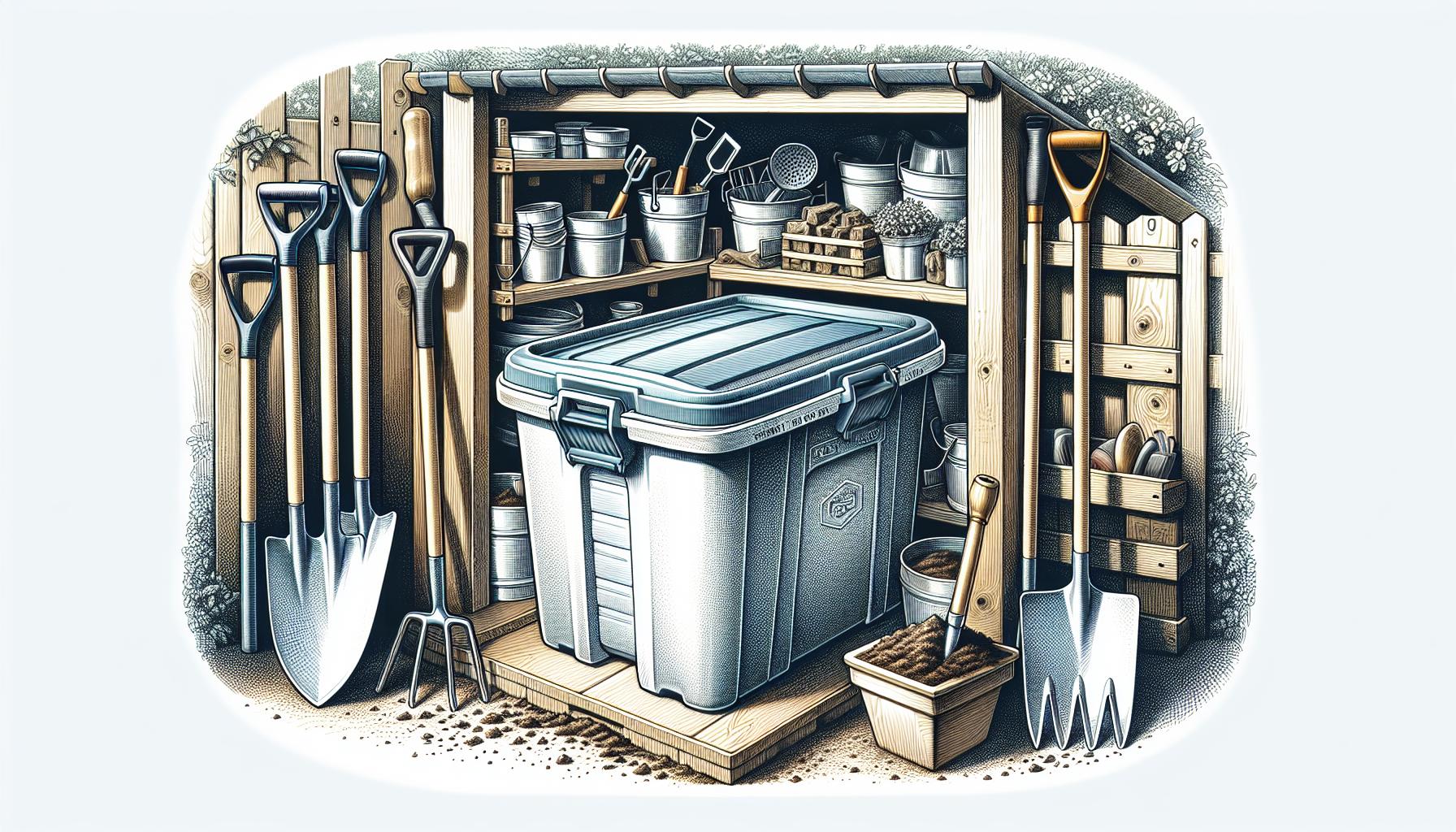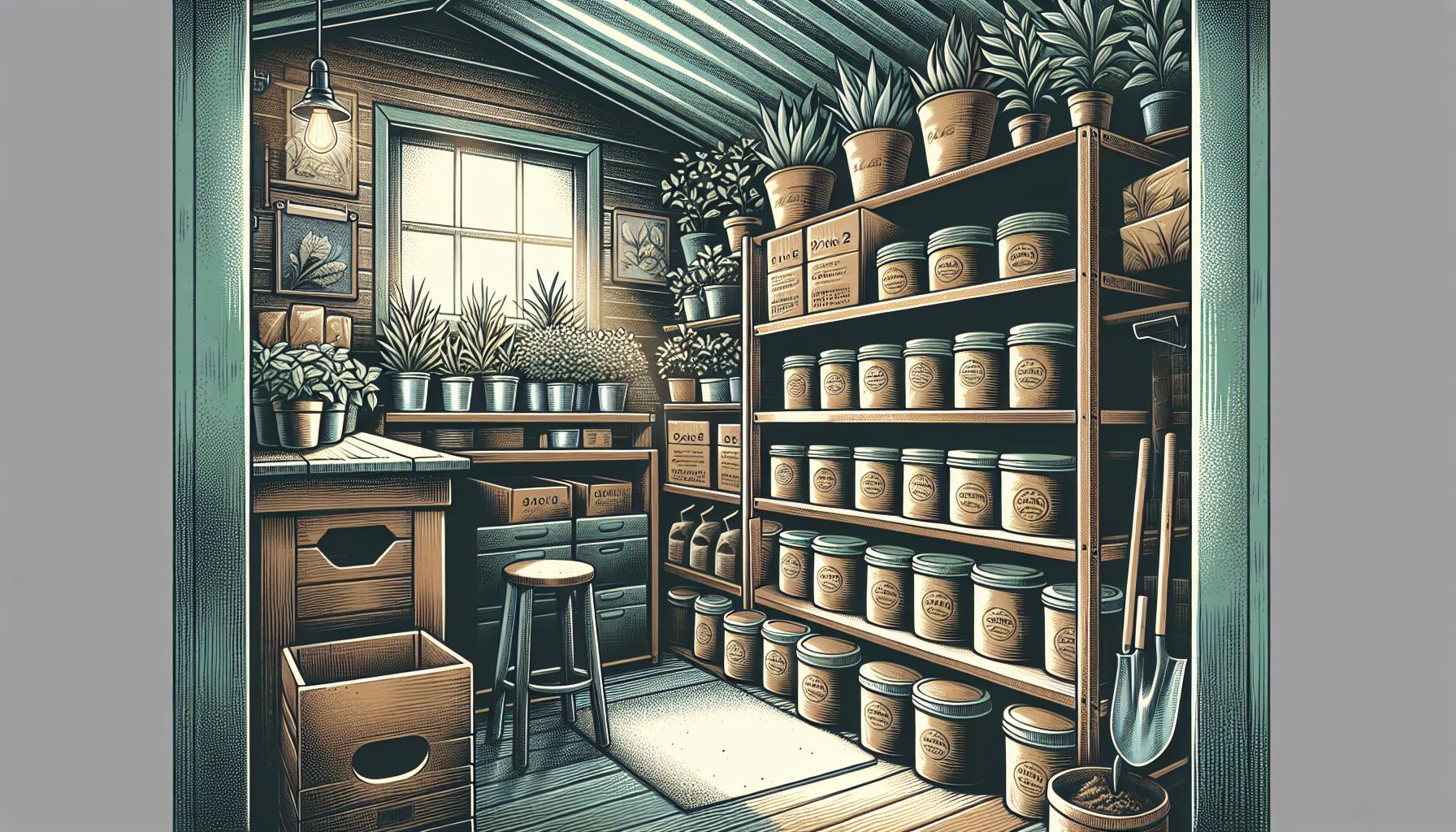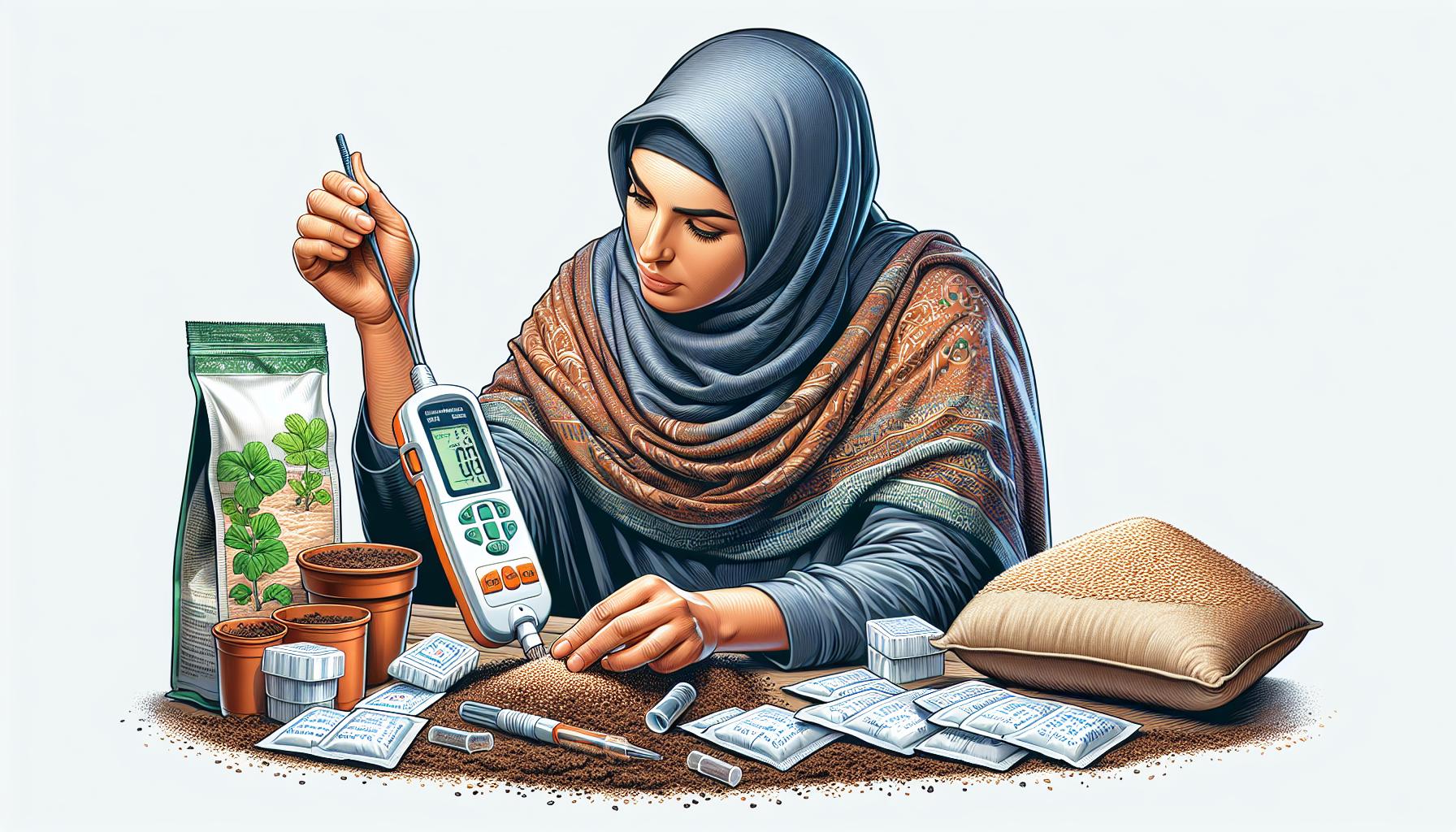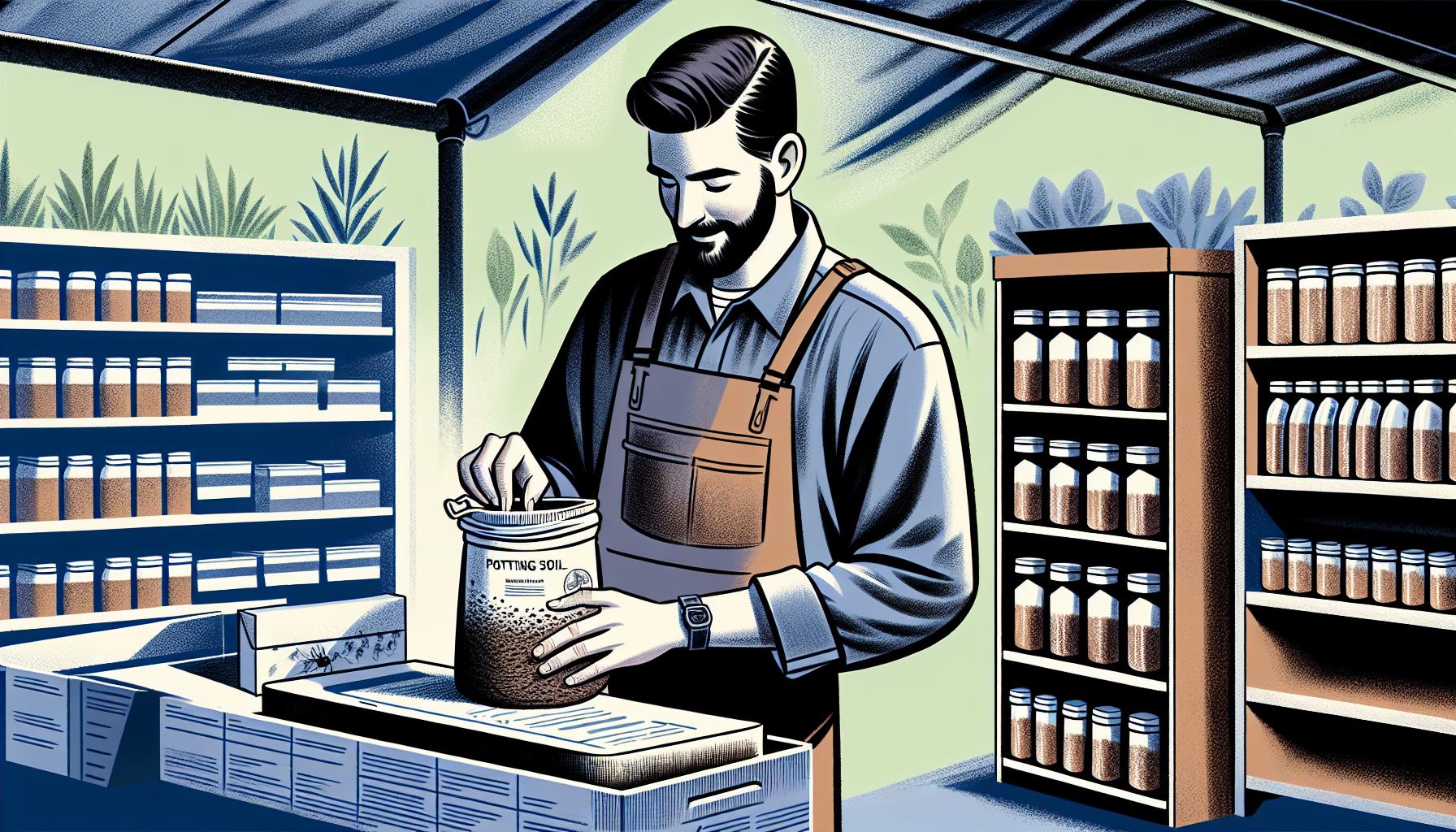
Storing potting soil correctly is key to maintaining its quality for your plants’ health and growth. You’ve invested in high-quality soil; now let’s ensure it stays fresh and pest-free. Proper storage solutions can save you time and money, preventing waste and the need for frequent replacements. Whether you’re an avid gardener or just starting out, mastering the art of potting soil storage will keep your green space thriving all year round.
Why storing potting soil is important
Understanding the nuances of potting soil storage can have a substantial impact on the vitality of your plants. Just like any other element crucial to horticulture, storing potting soil correctly is not just beneficial, it’s essential for ensuring that your plants have the best possible environment to thrive in. Here are some compelling reasons why proper storage should be high on your gardening checklist.
Preserving Soil Quality
Potting soil teeming with nutrients and beneficial microorganisms is key to plant health. When exposed to the elements, the quality of potting soil deteriorates significantly.
- Nutrient Retention: Stored potting soil keeps its nutrient profile intact.
- Microbial Life: Beneficial bacteria and fungi in potting soil flourish in the right conditions.
Preventing Contamination
Your potting soil can become a breeding ground for unwanted guests if not stored properly.
- Pest Control: Sealed containers keep insects and rodents at bay.
- Disease Prevention: Secure storage prevents the introduction of soil-borne diseases.
Cost Efficiency
Investing in proper storage means you’re not regularly spending money on replacement soil.
- Longevity: Properly stored soil remains viable for longer periods.
- Waste Reduction: By protecting your soil from degradation, you reduce the need to discard and replace it. Effective potting soil storage directly correlates with the success of your garden. By following straightforward storage measures, you’ll maintain a vibrant, healthy green space. Take time to evaluate your current soil storage habits and make adjustments where necessary. Your plants will thank you for it, and you’ll notice the difference in their growth and health.
Now that you’re familiar with the ‘whys,’ let’s explore the ‘hows’ of storing potting soil.
Factors to consider when storing potting soil

When you turn your attention to the storage of potting soil, certain factors come into play to ensure that the soil’s quality remains intact for your plants’ optimal growth.
Humidity Levels
Maintaining correct humidity levels is crucial as high moisture content can lead to mold growth and pest infestation. Conversely, excessively dry conditions may strip potting soil of its vital nutrients. Aim to strike a balance, keeping the soil neither too wet nor too dry. ### Temperature Control
Potting soil should be stored in conditions where temperature fluctuations are minimal. Extreme temperature changes can affect the biological activity within the soil and compromise its structure.
Light Exposure
Limit the soil’s exposure to direct sunlight. UV rays can degrade organic matter in potting soil, reducing its nutritional value. Find a spot that’s shaded or indoors to protect your soil’s integrity.
Container Selection
Choose the right container for your potting soil. An airtight container can help regulate humidity and temperature conditions. It also serves to ward off pests and other contaminants that may harm your soil’s quality.
Accessibility
Store your potting soil in a location that’s easily accessible for you. You’re more likely to use your potting soil efficiently if it’s conveniently placed—saving you time and effort in your gardening tasks.
By giving due consideration to these factors, you’ll ensure that your potting soil retains its health-enhancing properties, providing a reliable foundation for your plant’s growth. Remember, the longevity and efficacy of your potting soil directly influence the vitality of your plants. Your careful attention to the storage details will pay off in the thriving greenery you cultivate.
Choosing the right container for potting soil storage

When looking to preserve the quality of your potting soil, selecting an appropriate container is a crucial step. Your choice impacts not only the longevity of the soil but also its ability to support plant health.
Opt for Air-tight Containers to mitigate moisture loss or gain, which can disrupt the soil’s balance. Containers with sealing lids are excellent in preventing unwanted pests and organic matter from entering and compromising the soil.
Consider the Material when picking a container. Plastic bins are popular for their durability and affordability. But, ensure they’re BPA-free to avoid chemical leaching. Metal containers are another option, as they offer robust protection against extreme temperatures, but make sure they are lined to prevent rust.
The Size of the Container should match your storage needs. Large containers are useful for bulk soil, but if you’re storing smaller amounts, go for compact options to save space. Also, the soil must not be packed too tightly, allowing for some air circulation.
Accessibility plays a pivotal role; your container should be easy to open and move. You’ll often need to access the soil for various gardening tasks, so consider ergonomic designs with handles or wheels for effortless handling.
Remember, the right container safeguards the soil’s quality and ensures it’s ready when your plants need it. Keep these key points in mind to create the ideal storage environment for your potting soil.
Preparing potting soil for storage

Before you store your potting soil, it’s critical to prepare it properly to preserve its quality. The steps you take now can mean the difference between nutrient-rich soil and a compromised substrate when planting season arrives.
Dry Out Excess Moisture
Ensure your potting soil is not too damp. Excess moisture can lead to mold growth and nutrient loss. Spread the soil out on a clean surface in a warm, dry area to air-dry briefly before storing. Monitor the soil’s moisture level; it should feel slightly damp but not wet.
Remove Debris and Clumps
Inspect the soil for any plant debris, roots, or rocks. Removing these will prevent the potential growth of pathogens and keep the soil’s consistency smooth:
- Break up any large clumps
- Pick out roots and leaves
- Sieve to remove small rocks or debris
Mix in Fresh Compost
To rejuvenate your potting soil’s nutrient levels, consider mixing in a bit of fresh compost. A good rule of thumb is to add enough to enrich the soil without making it too heavy. Aim for a ratio that supports aeration and drainage.
- 10% compost to 90% soil is often a good mix
Incorporate Soil Amendments
If your soil needs a boost to adjust its pH or improve texture, add the appropriate amendments:
- For acidity, add sphagnum peat or elemental sulfur
- To decrease acidity, incorporate lime or wood ash
- For better texture, perlite or vermiculite work well
Label Your Containers
Finally, don’t forget to label your containers. Include the date of storage and any additives you’ve mixed in. This will help you keep track of your potting soil’s quality and readiness for use when you need it.
Proper storage location for potting soil

When you’re looking to preserve your potting soil, choosing the right location plays a critical role. Here’s what you need to bear in mind:
Consistent Temperature: Store your potting soil in a place where the temperature remains stable. Fluctuations can cause condensation inside the container, leading to mold or mildew. Aim for a cool area, ideally between 10-15°C.
Darkness is Key: Light exposure, especially direct sunlight, can degrade the quality of your potting soil over time. Find a dark space, such as a shed or garage, to keep the soil away from light, ensuring it stays potent.
Ventilation Matters: Your storage location should have good air circulation. This prevents the buildup of dampness and associated issues like fungal growth. Make sure the area is dry and well-ventilated.
Accessibility for Use: You’re likely to need the soil periodically, so store it in an easily accessible spot. Avoid areas that are tough to reach or require moving heavy objects out of the way.
Elevate When Possible: If you’re storing soil on the ground, use shelving or pallets to elevate the containers. This not only helps in avoiding issues with pests and insects but also minimizes the risk of water damage from spills or flooding. By following these guidelines, you’ll ensure your potting soil is kept in an environment that maximizes its longevity and maintains its quality until you need it again. Remember, the location you choose has a direct impact on the soil’s condition and, so, the health of your plants.
Tips for maintaining the quality of stored potting soil

Maintaining the quality of your stored potting soil is essential to ensure it provides the right nutrients and environment when you’re ready to use it. With proper care, your soil will remain fertile and free of pests and diseases. Monitor Moisture Levels Regularly
Ideally, potting soil should be slightly damp but not wet. Regular checks will help prevent mold growth and bacterial activity that can compromise soil quality. Here are ways to manage moisture:
- Use a moisture meter for accurate readings
- Air out the soil if it feels too moist
- Add dry rice or silica gel packets to absorb excess humidity
Rotate Stored Soil
- Rotating your soil stocks ensures even exposure to any environmental conditions within the storage space.
- This practice also discourages pest infestation and promotes a balanced soil composition. Simply switch the positions of your soil containers periodically.
Inspect Soil Before Use
Before using the stored potting soil, always give it a thorough inspection. Look out for:
- Unusual odors which may signify fungal or bacterial growth
- Signs of pest infestation like insect eggs or larvae
- Any signs of weed seeds that could lead to unwanted growth
Refresh with Nutrients
Your potting soil may lose nutrients over time. Before planting, revitalize the soil:
- Mix in a balanced, slow-release fertilizer
- Add new compost to replenish organic matter
- Stir in specific soil amendments based on the needs of your plants
Remember, the health of your plants starts with the quality of the soil you provide. By keeping these tips in mind, you’ll ensure that your stored potting soil remains in the best possible condition.
Common mistakes to avoid when storing potting soil

Overlooking Pest Infestations
One of the major mistakes you’re likely to make is disregarding the signs of pest infestations. If you store your potting soil without inspecting it first, you could be providing a haven for pests to multiply. Always check for insects or larvae before sealing your soil bags. Insects can devour organic matter in the soil, making it less nutritious for plants.
Ignoring Environmental Factors
Environmental factors such as temperature and humidity play a crucial role in the longevity of your potting soil. Storing soil in an area that’s either too humid or too dry can lead to issues like mold or overly dry, unusable soil. Find a storage area that maintains a consistent and moderate environment to protect your soil’s quality.
Neglecting Airtight Containers
Storing potting soil in non-airtight containers is a common mistake. Exposure to air can cause your potting soil to dry out or become contaminated with pathogens. Use containers that have tight-fitting lids to avoid these problems. A well-sealed container keeps the potting soil’s moisture levels stable and prevents contamination.
Opting for Improper Storage Locations
Choosing the wrong storage location can have adverse effects on your potting soil. Avoid areas prone to flooding, which can saturate your soil. Also, direct sunlight can overheat your soil, causing beneficial microorganisms to die off. Your storage spot should be cool and shaded to ensure the soil remains in prime condition for your plants.
Remember, by sidestepping these common pitfalls, you ensure your potting soil remains viable and ready for when your green thumb calls to action.
Conclusion
Storing potting soil correctly is key to maintaining its quality for future gardening projects. By following the guidance you’ve learned, you’ll ensure your soil remains in top condition, ready to support plant growth when you need it. Remember, it’s all about being mindful of moisture, pests, and the environment your soil is kept in. Stick to these best practices and you’ll avoid the common pitfalls that can compromise your potting soil’s effectiveness. Happy gardening!
Colin Macmillan is a seasoned entrepreneur and the CEO of Riverwood Landscape, a leading landscaping company based in Canada. He has been at the helm of the company since leaving high school, demonstrating his strong leadership skills and business acumen.
Colin’s expertise lies in various aspects of landscaping, including lawn care, interlocking, sod installation, and commercial maintenance. His hands-on approach and dedication to the craft have been instrumental in building Riverwood Landscape into a reputable brand.
One of his most notable achievements is the creation of a successful landscape franchise that services multiple locations. This accomplishment underscores his strategic thinking and ability to scale operations effectively.
Colin has also had the privilege of working with Guelph Hospital for landscaping and maintenance, a testament to the trust and reliability that his company has earned over the years.
His professional mission is to offer the best services and experiences for customers, a goal that he tirelessly pursues. Colin’s commitment to excellence and customer satisfaction continues to drive the growth and success of Riverwood Landscape.








